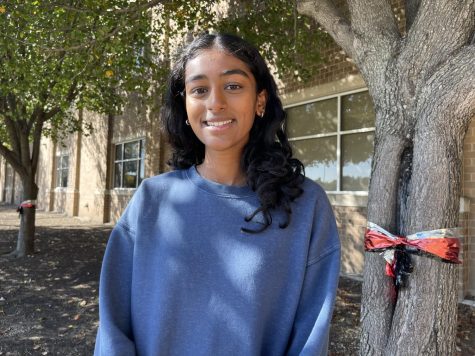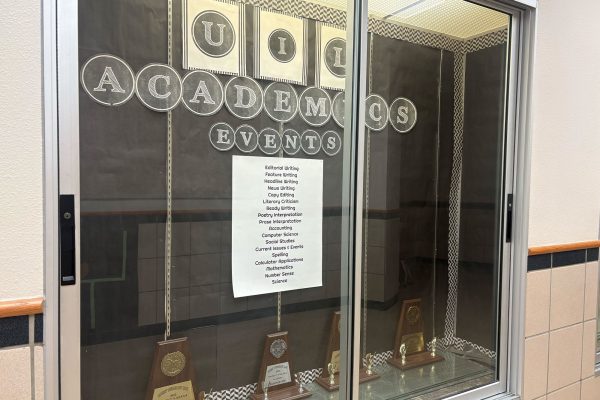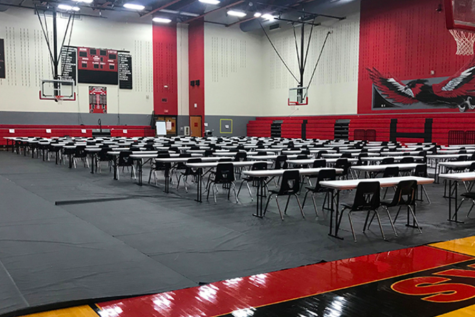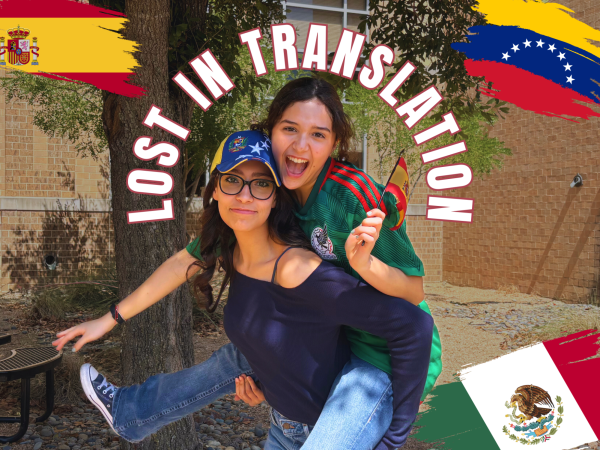Found family: one Redhawk’s international adoption journey
Leaving the hospital after birth is the start of a new chapter for most families, but that’s not the case for all students.
At just a few days old, more than 7,000 miles away, junior Hannah Beeler saw her life take an unconventional turn.
“I was born in the Guangdong province of China, which is kind of Southern China in 2004. They found me when I was suspected to be two days old, outside of a police station. They kind of just estimated my age, by looking to see my umbilical cord scars. And then they took me to the orphanage where I lived for a year and a month,” Beeler said. “So 13 months until I was adopted by a lovely couple and brought to the United States.”
That couple was Janet and Paul Beeler who began to think about an international adoption after visiting China.
This trip to China 17 years ago marked the start of a new chapter in this family’s life.
“We have some Chinese friends, and we went to China with them and toured a lot of the country and we then came home, and through discussion, we decided to adopt. So the discussion was a lot of what happened in China with the one-child policy, and so many girls were being put into orphanages,” Hannah’s mother Janet Beeler said. “Because of that situation, we decided to go ahead and adopt and put in our paperwork for China, to adopt because we love the culture, we love the food, we love just everything about China, everything that they had to offer. So we thought that a child who was in need of a family really needed to have a family that we could provide for.”
Beeler was one of only about 22,000 children adopted internationally in 2004 through a lengthy process that requires filling out many forms, proof of financial stability, and usually a home inspection.
But perhaps one of the biggest differences for some international adoptees is a question that will likely never be answered.
“I’ve definitely always wondered who my birth parents are,” Hannah said. “I think every adoptee is always a little bit curious, especially, like, if they’re born in the United States, like closed adoption, they don’t know or especially internationally, we usually never are able to find our adopted parents. If we are, it’s kind of like a big win for all of us. We really love it. But like I said, I’ve definitely always been curious. But I think just kind of accepting that I probably won’t. It’s just something I’ll have to do.”
Although Hannah long ago adapted to being adopted, the Beelers had to overcome many obstacles that come with being a transracial family.
“We have faced challenges. I would say Hannah has faced more challenges than we have,” Janet said. “But I think her main challenges have been questions from other people and how to answer those in a positive light. So our challenges mainly have been to learn about the culture and to incorporate them and to support her and learning to integrate her identity and to find her identity on who she is and having one fit in one culture, looking like a certain culture and having the other fit in the other culture of being brought up by Caucasian parents and being Asian. It’s difficult, as I’m sure any international blended family is.”
Hannah has struggled with the divide between her two cultures and finding her place.
“As a young child, you don’t really think about being in an interracial family, at least for me, since I was adopted so young. It was just they’re my parents. When I started getting older and kind of realizing more of my culture, finding friends in school that were also Chinese, experiencing more of the language, and the culture was when I kind of started feeling that divide, like, ‘oh, I’m kind of different from my parents’,” Hannah said. “I’ve always lived in Plano and Frisco, and we’re a really diverse area and so just growing up and kind of having all those cultures around me and realizing that I guess I am a little bit different, there’s a little bit of a divide. You kind of just feel like you’re stuck in between two worlds a little bit. And that’s something I’ve struggled a little bit with. But my friends and my family, they’ve always surrounded me with love and just made me feel that’s okay to be who I am.”
To get to this point, Hannah’s parents did whatever they could to help her answer whatever questions would come her way.
“We’ve had all kinds of different learning opportunities as the years have gone on. But when she was young, we did everything we could to incorporate her culture into our family. And that meant learning about her culture ourselves so that we could participate,” Janet said. “One of the things that we did was we joined a support group playgroup with parents who look like us and who look like Hannah. And so she had somewhat of normalcy through that. So she would go to the playgroup, and the parents would talk about all the issues that they were dealing with and how to help their children integrate because a lot of what happens is that the child doesn’t look like their family.”
However, none of this stopped Beeler from connecting with her culture.
“My parents and they have always tried to incorporate Chinese culture into my life,” Hannah said. “We’ve gone to all the festivals, and I’ve been to a bunch of Chinese weddings. We celebrate the moon Cake festival, and the Lunar New Year, which is a really big thing in Chinese culture. While I haven’t been completely fully immersed in the culture since I haven’t grown up in it, there is still a lot of stuff that my parents have been able to teach me.”

Kirthi Gummadi is starting her fourth year with Wingspan and is an Executive Producer for WTV this year. In her free time you can find her hanging out...













